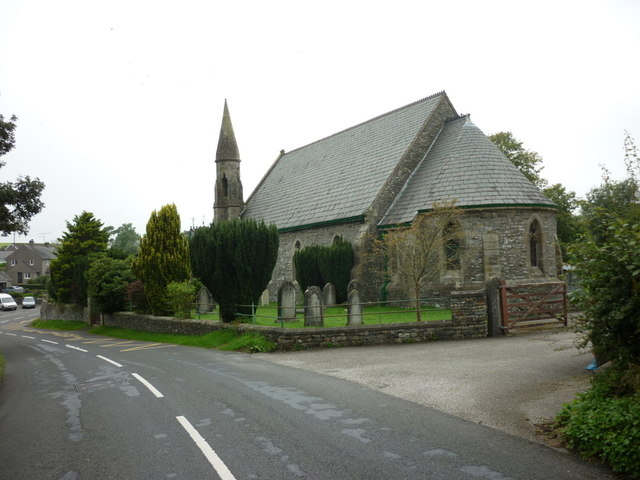Topics > Civil Parishes in Cumbria > Old Hutton and Holmescales Civil Parish > Old Hutton Chapelry, 1848
Old Hutton Chapelry, 1848
HUTTON, OLD, a chapelry, in the parish, union, and ward of Kendal, county of Westmorland, 4 miles (S.E.) from Kendal; containing 488 inhabitants. This place and Holmescales form a joint township; but the latter, though united with Old Hutton in the poor's-rate and in the partition of common rights, is a hamlet forming the extreme point, east, of the parish of Burton-in-Kendal, and ecclesiastically belonging to it. The township is situated on the higher Kirkby-Lonsdale road, and on the river Bela, in ancient records Betha. The old inclosed lands comprise 1827a. 1r. 9p. The commons have lately been inclosed, and considerably improved, some of the owners having planted trees, and others tried drainage and plough cultivation to a rather large extent: these lands comprise 1293a. 1r. 36p. The surface of the township is undulated, being a succession of well-wooded, gently rising, and well-cultivated little hills; the views, also, are extensive and pleasing, extending to Morecambe bay on the west, and the Lake mountains on the north. The soil is generally a light sandy gritty loam, in provincial phrase, "sharp." At the village of Bridge-End, on the Bela, is a small worsted manufactory, long established; and at Holmescales is a bobbin-mill. Bleaze Hall, for several centuries the seat of the Batemans, was a large and elegant mansion, which still retains traces of its former consequence in a fine oak-wainscoted room, dated 1624; Hood-Ridding, another ancient mansion, has belonged for more than two centuries to the family of Yates.
The living is a perpetual curacy, with a net income of £98; patron, the Vicar of Kendal; impropriators, the Master and Fellows of Trinity College, Cambridge. The tithes have been commuted for £104. 14. 8. A farm belonging to the benefice, situated at Esgrigg-End, contains 19 acres, customary measure; and another at Flodden Hill, in Holmescales, 18½ acres, same measure; and an allotment of 13 statute acres has been added as the share of common for both. A neat and commodious parsonage was built in 1841 by the incumbent, the Rev. Francis Whalley, aided by a grant of £200 from Queen Anne's Bounty. The chapel, dedicated to St. John the Baptist, was erected in 1628, and rebuilt in 1699; it is a plain edifice, having square windows with mullions, and a small eastern window which is a pure specimen of the old English style: a burial-ground was consecrated in 1822. There is a place of worship for dissenters. A school, built and endowed in 1613 by Edward Milner, and rebuilt in 1753, has an income of £19. 11. per annum; and a parochial lending library, for the use of the minister and neighbouring clergy, was founded in 1757 by the Associates of the Rev. Dr. Bray: it consists of nearly 400 volumes. A small estate, producing £18 per annum, and supposed to have been given by Roger Ward, of the township, is appropriated to the poor; and there are some minor charities. On the Bela, about a quarter of a mile west from the chapel, is a cascade with a noble volume of water.
Extract from: A Topographical Dictionary of England comprising the several counties, cities, boroughs, corporate and market towns, parishes, and townships..... 7th Edition, by Samuel Lewis, London, 1848.










